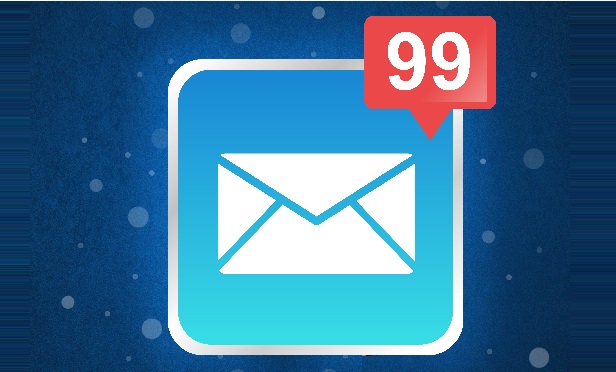 For thedeskless employee—or most workers across industries such as retail,hospitality, manufacturing and health care—“trickle-down” orcascading systems of communicating information is no longereffective. (image: Shutterstock)
For thedeskless employee—or most workers across industries such as retail,hospitality, manufacturing and health care—“trickle-down” orcascading systems of communicating information is no longereffective. (image: Shutterstock)
As many HR professionals can attest, communicating information such as benefits toemployees can be a daunting task. Keeping up-to-date on ever-changing policies andregulations and helping employees understand what theyall mean can be a time-consuming and costly process. Thisis especially true of the often overlooked deskless worker whodoesn't have the same privileges as his or her deskboundcounterparts, including basic technologies like corporate email orintranets.
|For the deskless employee—or most workers across industries suchas retail, hospitality, manufacturing and health care—“trickle-down” orcascading systems of communicating information is no longereffective. HR leaders still using breakroom posters, emailed memosor snail mail are probably missing the mark when communicating to alarge percentage of their employee base. If they don't adapt andimplement new internal communication strategies that go beyondtactical operations and actually drive engagement with employees,these professionals run the risk of becoming obsolete.
|Related: Communications breakdown: How can brokers andemployers get on the same page with technology?
|One key factor in creating change is through implementing theright technologies. Recently, leading analyst firm Gartner released a report that emphasized theimportance of technology within internal communication to drivebusiness success. The report highlighted mobile technologyin particular as a way to modernize communication and engagementstrategies. Since nearly everyone has a mobile device of some sortthese days, solutions such as mobile employee communications appsoffer a cost-effective way to efficiently engage all employees withtimely and important information, regardless of location or jobfunction.
|Through mobile tech and apps, HR professionals can:
- Send push notifications: Mobile allows for thesending of quick updates to all employees (or targeted groups) onimportant information such as changes to benefits as well as theability to easily access the various documents required. This caneliminate the challenge HR leaders sometimes face, especially ingetting information to those workers who don't have corporate emailor intranet access, as well as the time and expense incurred inensuring that all employees receive critical information.
- Leverage analytics: One of the importantaspects of going mobile is the ability to analyze how employees areinteracting with content. Through analytics, HR leaders canactually know whether the content is being consumed at all, whatcontent is being consumed the most, and for how long. They canbetter understand what kinds of content employees prefer and usethis information to possibly rethink how they create content toensure they are providing information in a way that employees willbest take advantage of.
- Create content that actually resonates withemployees: By leveraging analytics, HR and communicationprofessionals can understand their employee base better than everbefore and determine the best ways to distribute content throughthe small screens of mobile. It is well known that Millennials andGenZers prefer sound bites of information and video to long windeddocuments and diatribes. Mobile provides an easy distributionchannel to offer employees content the way they want to receive itand when they want to receive it. It allows those involved in HRand employee communications to better reach employees with contentthat resonates, while still aligning with company messaging.
Technology empowers executives with the tools to spur changeacross their organizations. And, one can only presume that mobiletechnology will continue to play a pivotal role when it comes toemployee communications and engagement.
|Moving forward, HR leaders should not only tap this technologyto achieve positive results in their work, but also use it to helpshed the impression that HR departments are there just as tacticaldistributors of information. It offers the opportunity for HRprofessionals to take on a new role as strategic communicator,enhancing the employee experience while at the same timecontributing to an organization's business success.
Read more:
- 5 technology and data trends affecting employeebenefits
- Taking the facts OUT of benefitscommunications
- Target benefits communication to reachemployees
 Jeff Corbin is founderand CEO of APPrise Mobile, a business-to-business/enterprisenative app platform. Prior to APPrise Mobile, Jeff served as theCEO of KCSA Strategic Communications in New York City.
Jeff Corbin is founderand CEO of APPrise Mobile, a business-to-business/enterprisenative app platform. Prior to APPrise Mobile, Jeff served as theCEO of KCSA Strategic Communications in New York City.
Complete your profile to continue reading and get FREE access to BenefitsPRO, part of your ALM digital membership.
Your access to unlimited BenefitsPRO content isn’t changing.
Once you are an ALM digital member, you’ll receive:
- Critical BenefitsPRO information including cutting edge post-reform success strategies, access to educational webcasts and videos, resources from industry leaders, and informative Newsletters.
- Exclusive discounts on ALM, BenefitsPRO magazine and BenefitsPRO.com events
- Access to other award-winning ALM websites including ThinkAdvisor.com and Law.com
Already have an account? Sign In
© 2024 ALM Global, LLC, All Rights Reserved. Request academic re-use from www.copyright.com. All other uses, submit a request to [email protected]. For more information visit Asset & Logo Licensing.








